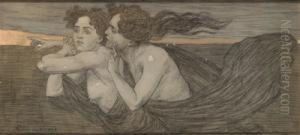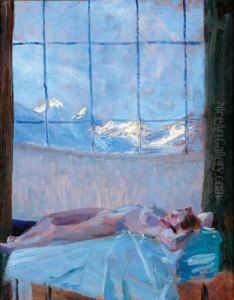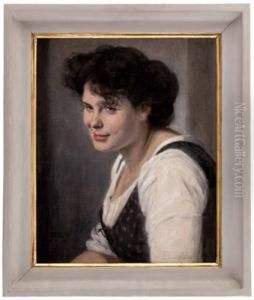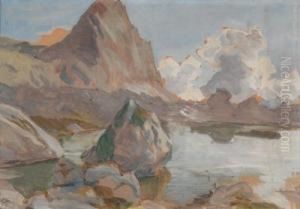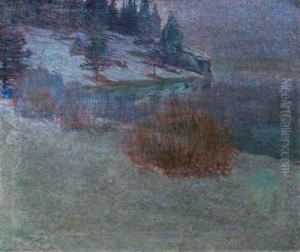Ernst Stohr Paintings
Ernst Stohr was an Austrian artist, musician, and writer, who played a significant role in the Viennese Secession movement at the turn of the 20th century. Born on August 31, 1860, in Sankt Pölten, Austria, Stohr displayed a broad spectrum of talents from an early age. He studied at the Academy of Fine Arts Vienna, which was a breeding ground for many artists who would later rebel against the conservative nature of the Viennese art establishment.
In his early career, Stohr was influenced by Symbolism and Art Nouveau (Jugendstil in German), which were gaining prominence throughout Europe. His works often contained allegorical and mythological themes, and he was known for his delicate line work and decorative style. Stohr was not only involved in visual arts but was also a keen musician and played in a string quartet with fellow artists Gustav Klimt, Koloman Moser, and Josef Hoffmann, all of whom would become central figures in the Vienna Secession movement.
Stohr was one of the founding members of the Vienna Secession in 1897, a group that sought to break away from the traditional academic art scene. The Secession provided a platform for artists to exhibit their work independently and introduced Vienna to the avant-garde movements sweeping across Europe. Stohr contributed to the group's exhibitions and was involved in their publication 'Ver Sacrum', which became an important medium for the dissemination of the Secessionist ideas.
Despite his involvement with the Secession, Ernst Stohr's work is less well-known than that of his contemporaries like Klimt and Egon Schiele. His contributions to the movement were overshadowed by the more dominant personalities and the revolutionary styles that emerged from the group. Still, his artistic output was significant, and he created a number of illustrations, graphic works, and paintings that are representative of the early Secessionist style.
Ernst Stohr's artistic career was cut short by his untimely death during the influenza pandemic of 1917. He died on October 10, 1917, in Vienna, leaving behind a body of work that, while not as widely recognized as that of his peers, provides insight into the diverse talents and interests of the artists who were part of the Vienna Secession. Today, his works can be found in various collections and museums, offering a glimpse into the world of early modernist art in Austria.
